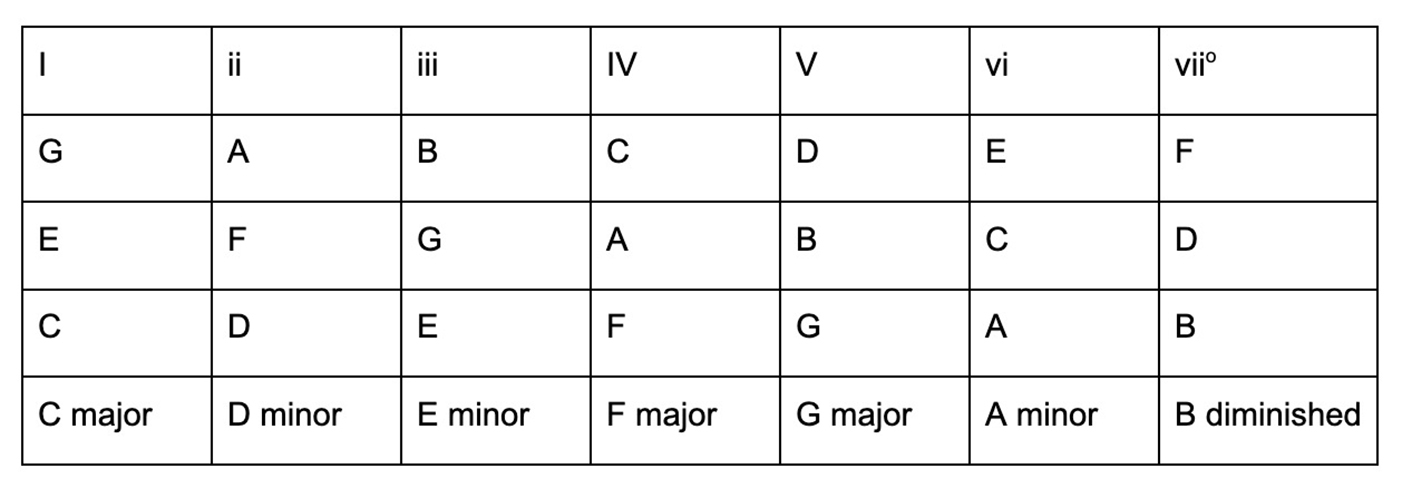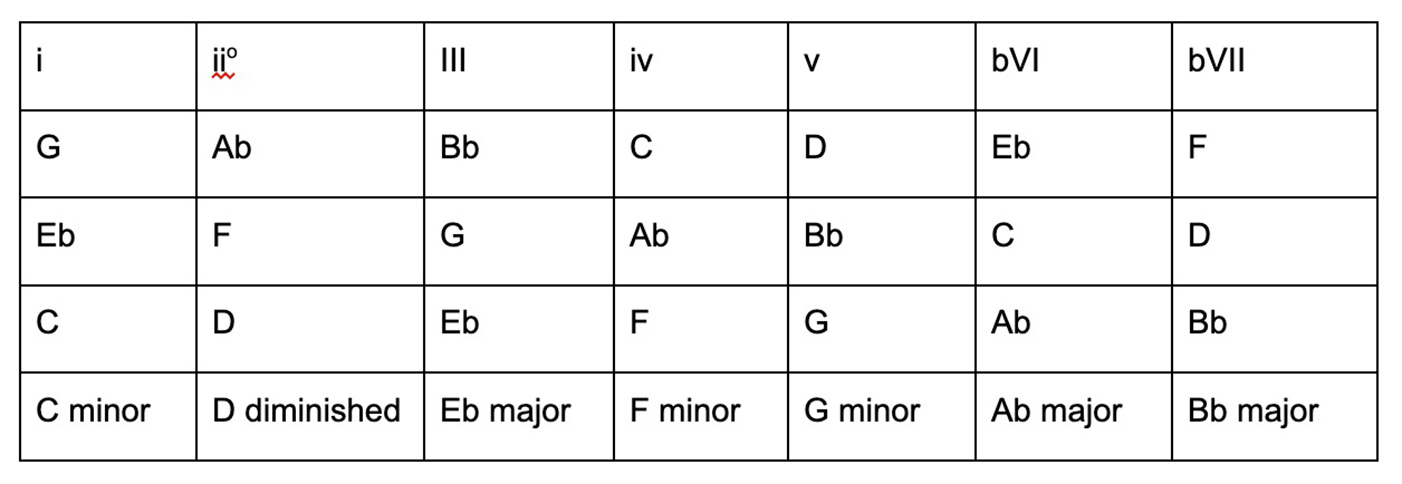Songwriting is a challenging process, and having a new technique to explore can help inspire new material. Borrowing chords is a cool technique to freshen up any chord progression. It can make your songs sound less predictable, yet still accessible.
Let’s break down how this works.
The chords of a scale
Each key has its own set of chords that ‘sound right’ played together. They’re created using the notes of that key’s scale.
We’ll consider a song in the key of C major. It uses chords created from the notes of the C major scale.
The notes in the C major scale are: C D E F G A B C
These are the basic chords you can make from those notes:
C major ( C E G )
D minor ( D F A )
E minor ( E G B )
F major ( F A C )
G major ( G B D )
A minor ( A C E )
B diminished ( B D F )
Those chords are structured using notes from the C major scale—specifically, notes 1 (C), 2 (D), 3 (E), 4 (F), 5 (G), 6 (A), and 7 (B) as laid out in this chart:

A typical progression for the C major key uses these four chords in some rhythm:
C major (I) / A minor (vi) / F major (IV) / G major (V)
This chord progression sounds great, and has been used in countless songs.

Build a stunning website for your music
Bandzoogle gives you all the tools you need to create your own unique band website, including responsive templates and commission-free selling tools.BUILD YOUR WEBSITE
You can incorporate a surprise element into this classic chord progression by borrowing a chord from a parallel key. That borrowed chord can be added into your existing progression, or it can substitute one of the original chords in your progression.
Parallel keys
A parallel key has the same root note as the key of your song but switches mode (major / minor). So, C major has the parallel key of C minor, and C minor has the parallel key of C major. They share the same starting note (root) but have a different mode / scale.
C minor uses these notes in its scale: C D Eb F G Ab Bb
They create a set of seven chords that’s different from the C major set:

This gives you a whole new set of chords available to use in your C major progression!
Where to place borrowed chords
Let’s bring back our example chord progression from the C major scale:
C major (I) / A minor (vi) / F major (IV) / G major (V)
You could swap out the A minor (vi) chord for Ab major (bVI) from the parallel key, and your chord progression would look like this:
C major (I) / Ab major (vi) / F major (IV) / G major (V)
Or you could swap out G major (V) for F minor (iv) from the parallel key and get this progression
C major (I) / A minor (vi) / F major (IV) / F minor (iv)
The trick is you can only borrow a chord for a short time. When you borrow a chord from a parallel key, you step away from the original parent key.
Because it’s temporary, the borrowed chord creates a sense of surprise but the listener still registers that the chord belongs in the song’s progression. Too long in the parallel key and the change feels more permanent.
Another rule of thumb: it’s more common that songs in major keys borrow chords from their parallel minors, rather than the other way around.
An example to consider
Some borrowings are used more often than others.The flat major III borrowing is a favorite, like in the Beatles’ Sergeant Peppers’ Lonely Hearts Club Band.
This time the key is G major:
We’re Sergeant Pepper’s Lonely Hearts Club Band
G major Bb major C7 G
I bIII IV I
The parallel key of G major is G minor and that’s the source of the borrowed chord:

There are many other borrowed chords to listen for and to try out in your chord progressions. The technique is also known as modal interchange. Borrowing from parallel minor or major keys is just one type of modal interchange, but it’s a goodie!



